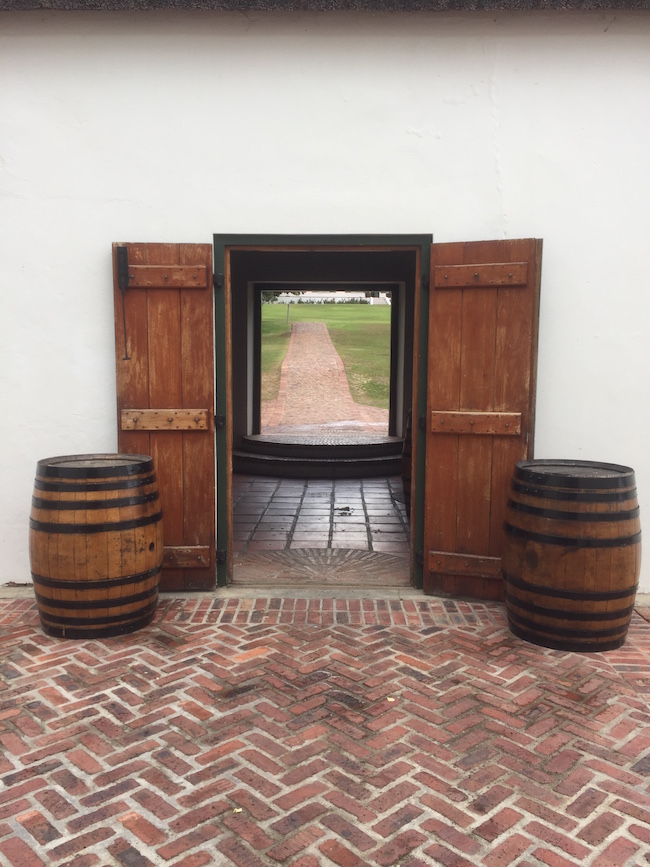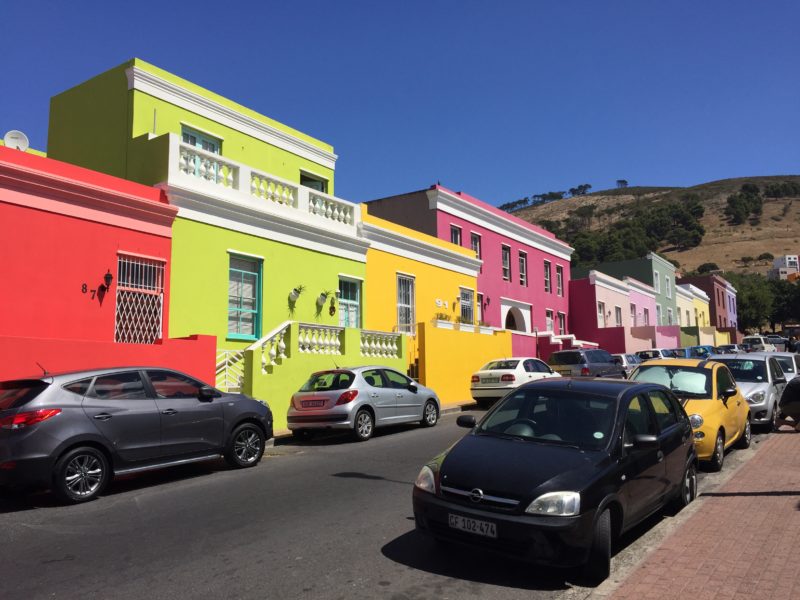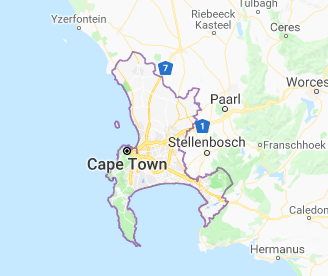Cape Town, South Africa is the second most populous city in South Africa located on the western coast. It has beautiful world-renowned landmarks, a gorgeous coastline, and is a melting pot of culture with its high-level immigrants and expats. Cape Town is one of those cities that should be on everyone’s dream travel list because it has so much to offer every type of visitor.
We have spent over 3 months in South Africa. If you would rather listen to the podcast on our experiences in South Africa listen to Podcast 4: South Africa: A Guys’ Trip Heaven (Couples Welcome too).
Wine Country– There are hundreds of wine estates/regions in South Africa. All are unique in their own way. During our stay in South Africa, we visited three: Webersburg Wine Estate (Helderberg region), Blaauwklippen Vineyards (Stellenbosch Berg region), Boschendal Vineyards (Franschhoek Valley region). Most wineries provide wine tastings from 50-75/ person ($3.70-$5.50 USD) and most wineries also have wine tastings, cellar tours or vineyard tours that one can partake in. The properties themselves are rich in history and simply gorgeous; with mountains in the backgrounds, lush, green vineyards, and well-kept grounds.

Video from Wine Country:
African Cuisine– We ate at several restaurants during our stay in Cape Town, however, there are two that are my most favorite; Gold Restaurant and Addis in Cape. Gold Restaurant is more than just a restaurant. The evening begins with an interactive Djembe drumming lesson followed by percussive group step-dance that included local children and adolescents and then a traditional hand-washing ceremony.
If you are dining at Gold, come with an appetite, as you will be served an authentic 14-course African cuisine; influenced by Dutch, English, Cape Malay, and Indian cooking. While dining, your entertainment experience continues throughout the entire night. There is continuous African singing and dancing, Djembe drumming, and Mali puppet theater. There is a variety of options for vegetarians and vegans choose from, you just have to let your waiter/ waitress know. One of my favorite dishes was lentil dhal. You could taste the cumin, ginger, turmeric, and chili. The flavors wonderful.
Videos of the dancers:
Addis in Cape is an Ethiopian Restaurant with a ton of options for vegetarians and vegans. Ethiopian food is traditionally served on a large, sourdough pancake called injera which is torn away in portions and used to scoop the food; injera serves as the utensils with you eat.
With that being said, prior to consuming food, our waiter came to our table with a basin and water pitcher and fresh towels so that we could wash our hands prior to eating. Injera is made from a grass, not grain, called teff that is harvested in various areas of Africa. The grass is fermented in water for several days prior to it being baked. The injera is high in fiber, iron, calcium and is gluten-free.
My favorites at Addis was the Misir Wot (red lentils), Kek Alicha (yellow chickpeas), Pumpkin Wot (cubes of pumpkin sauteed), and the Shimbra Asa Wot (chickpea cakes). When we were finished with our meal we enjoyed a mini Ethiopian coffee ceremony that included coffee paired with a popcorn snack and some fragrant Frankincense burning right at our table.
Boulders Beach- This beautiful beach, surrounded and sheltered by large boulders, is along the Indian Ocean’s False Bay coastline and is home to the protected, African Penguin. There are special boardwalks in place along the beach so visitors can easily take pictures and enjoy the penguins. In addition to the main penguin attraction, there are also areas where one can relax and sunbathe.
Travel Tip: Depending on how long you are traveling and what excursions you plan to take on, you may need to wash your clothes once or twice during your travels. Don’t send them out (though some countries do have great budget options for this) or have your hotel do them. Simply get a cheap bar of laundry soap or liquid and hand wash the particular items you need to get you through your stay then hang them on a clothesline in your bathroom or outside to dry. It is fast and easy. Find this and other tips on our Travel Tools page.
Signal Mountain- There is something magical about watching the sunset on Signal Mountain. The views are spectacular; looking over Cape Town and over the Atlantic Ocean. This is also a popular site for paragliders to take off a soar into the evening sky.
The West Coast Ostrich Ranch- Ultra South Africa 2016- The world’s best DJs. EDM. Light shows. Sun. Enough said.
Lions Head Mountain– Before South Africa, I had never “hiked” per se. My husband and I are very active people, walking 10 to 15 mile daily during our travels. Lions Head Mountain was my first “hike” and the one hour, treacherous, rocky hike/climb to the top of the mountain was definitely worth it!
The mountain itself is situated between Table Mountain and Signal Mountain and breathtaking 360-degree views of Cape Town. The path gets more difficult as you approach the top of the mountain and there are certain portions where you have to climb up metal ladders built into the side of the mountain and/or climb parts of the actual mountain to further ascend to the top, but as I stated earlier, the views along the way make the climb and the energy expended well worth it. It is also worth mentioning to not forget to bring plenty of water to stay hydrated along the way and to wear appropriate hiking gear (shoes, comfortable, athletic clothing, etc.).
I would also make sure to time your hike accordingly; if you start your hike before sunset, remember when you are coming back down the mountain, it will be dark and it is difficult to see and no safety railings are in place to keep you from falling off the side of the mountain.
Bo Kaap area– Cobblestone streets, Table Mountain in the background, and brightly colored houses ranging from every color you could imagine in a 64 count crayon box, Bo Kaap area is at the epicenter of Cape Town’s Cape Malay culture and rich in history. Early members of this ethnic group were brought over by the Dutch to South Africa and arrived at Cape Town as slaves.
They made the Bo-Kaap area their home. In the 1990’s, at the end of the apartheid, the residents of the area started to paint their once white homes bright colorful colors of their choice to celebrate the end of slavery and express their happiness about their new, bright futures. There are many Halal restaurants and mosques in the Bo Kaap area as the majority of the people living in Bo Kaap are Muslims.

Camps Bay Beach- Lined with palm trees, sandy white beaches, grassy knolls to have a picnic, sidewalks to take an afternoon stroll or morning jog, and overlooked by multi-story penthouses, Camps Bay beach is a trendy, scenic stretch of shoreline where people go to sunbathe, dine, have a cocktail and mingle, watch the sunset, and be seen.
Table Mountain– There are two ways to get to the top of Table Mountain; by cable car or by hiking up the side of the mountain. We chose the easier of the two options, the cable car ride, which takes approximately 5 minutes. The cable car itself has open windows and the views provided by the cable car are spectacular; 360-degree view of Cape Town.
The mountain itself is impressive. It is 2 miles (3km) from side to side. It has a flat top, like a table, with its edges containing steep slopes. It is over 3,500 feet (1,000m) above sea level and one can see Lion’s Head and Signal Mountain off in the distance. The mountain provides hikers with four hiking trails that vary in length and difficulty (based on terrain). There are many different plants and animals living on Table Mountain as well; porcupines, snakes, lizards, and frogs can be seen along the trails.
Traveled, March 2016

Leave a Reply